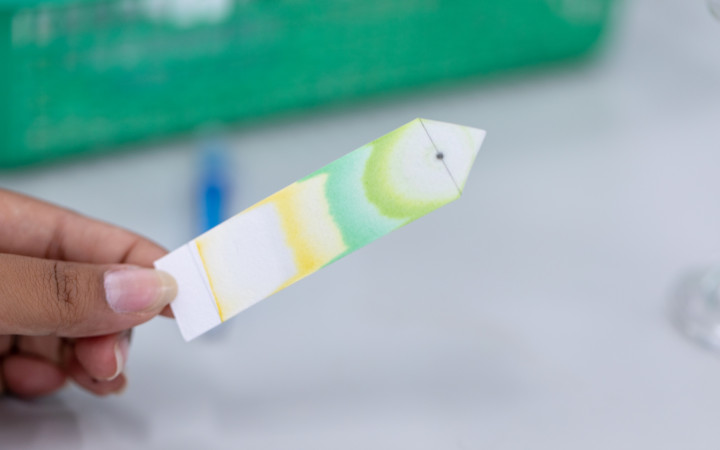Today’s Wonder of the Day was inspired by Jishnu. Jishnu Wonders, “What is chromatography” Thanks for WONDERing with us, Jishnu!
Do you ever imagine yourself as a scientist? Maybe you’ll discover a new element or even win a Nobel Prize. You could be the world’s next great chemist, like Marie Curie! If so, today’s Wonder of the Day might come in handy—we’re learning about a process called chromatography.
What is chromatography? It’s a way to divide a mixture into its separate components. There are a few different types of chromatography—gas, liquid, thin-layer, and paper, to name a few.
The word “chromatography” comes from the Greek words “chroma” and “graphe.” Together, they mean “color writing.” This is fitting, as it started as an art technique. It reaches back to the late 19th century, when people used it to separate pigments in dyes and paint.
Have you ever spilled water on a piece of paper after writing on it with a marker? If so, you may have seen chromatography in action! As water soaked through the paper, it smudged the ink. When the paper dried, you may have seen bands of many colors where there was once just one color of ink.
What happened to the ink? First, some of it dissolved into the water. The water is called the mobile phase, meaning it helped the ink move across the paper. The paper itself is called the stationary phase—unlike the water, it didn’t move.
As the ink spread, carried by water, its chemicals separated. These were caught by the solid paper through a process called adsorption. Some of these chemicals are caught faster than others, meaning some move much farther across the page. That’s how the colored bands ended up on the page.
What we’ve described is an example of paper chromatography. That means the mobile phase was a liquid (in this case, water). The stationary phase was a solid (paper). The separation itself was caused by polarity. That means the chemicals in the ink separated due to how attracted their molecules were to either the water or the paper.
In a lab, chemists are more likely to use a method called thin-layer chromatography (TLC). This technique is a lot like the paper method. The difference is that, instead of paper, TLC uses a glass slide as the stationary phase.
How do scientists use chromatography? It can help them study the individual substances in a mixture. It can also help them purify a material by taking out extra chemicals. It’s common in forensics, pollution monitoring, pharmaceuticals, and other fields.
Can you think of any other uses for chromatography? Would you like to try it out in a lab of your own one day? Maybe you’ll even find a new way to carry out the process!
Standards: NGSS.PS1.A, NGSS.PS1.B, CCRA.R.1, CCRA.R.2, CCRA.R.4, CCRA.R.10, CCRA.W.2, CCRA.W.4, CCRA.W.9, CCRA.W.10, CCRA.L.1, CCRA.L.2, CCRA.L.3, CCRA.L.6, CCRA.SL.1




